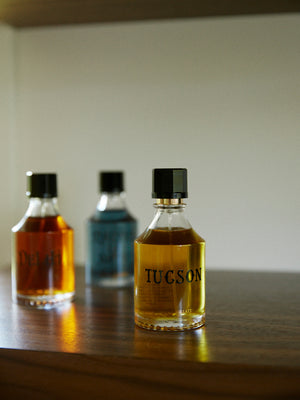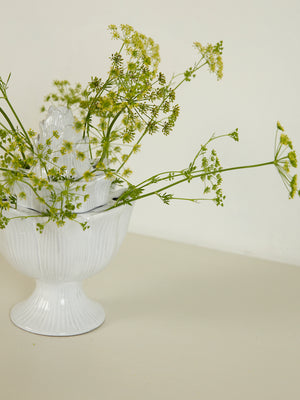Walk in the Park – Exclusive Interview
Introducing Walk in the Park– handcrafted and elegant wood turned objects for your home.
Walk in the Park is quiet homage to its namesake. Husband and wife duo, Sam and Jiho, named their handcrafted makings to honour the idea of slowing down and their gratitude towards nature. They believe in an honest approach to design where aesthetics and utility are intrinsic. Their work embraces an appreciation for the Japanese aesthetic of Wabi-Sabi that considers imperfection as beauty. Each piece of wood they use is sourced from local communities and small suppliers, and turned by Sam in their Titirangi studio.

We would love to know your story. What is your background?
I studied art, furniture and wood working in Korea and worked for an artist group as a technical helper. At the time, I was focusing on developing my career in commercial art rather than being an independent designer because it was nearly impossible to be recognized as an independent designer in a big city, so I am still quite surprised when I realize that I am a full-time maker. I feel like I have naturally become a maker in New Zealand because a lot of people have acknowledged my talents and supported me even though I felt as though I was not officially a maker. I feel so grateful to live in this beautiful land, where there are lots of small communities of people whose sensibilities are timeless and who value sustainability.

When did you start Walk in The Park and what was your motivation behind doing so?
I had a goal before moving to NZ. That was to slow down my life style and spending more time for self-development, family and friends. I think this motivation lead to creating many small projects that my wife, Jiho, and I can enjoy together with no abstruse thinking like when we are going for a walk in the park. The name suggests the idea of slowing down, taking in your surroundings and enjoying the quieter moments. Also, most importantly, there is no destination or obvious goal for this journey.
Can you tell us a little about how your pieces come together, about your process as makers & the people you collaborate with?
The principle of woodturning is nearly the same as making pottery on a wheel. They both rely on rotation energy to shape the material, but the main difference between throwing clay and turning wood is shaping the wood as it is turning- as it needs carving methods to make shapes out of raw blocks, whereas pottery needs building and stretching methods. For me, I have been trying to only use wood turning skills as I want to keep my work processes as simple as possible and there are so many options already to be made with just wood turning skills. Also, this limitation actually helps me to develop unique shapes and bring me specific ideas as I don’t have to think in straight, square or rectangular shapes.

Can you tell us a little bit about your latest range or pieces?
These days, I am making and developing on making mobiles, as they gave me a lot of opportunities to create interesting forms that I haven’t tried and it is satisfying when they turned out well balanced between each component. I think the mobile is such an elegant and beautiful object that can be regarded as an art piece.
Where do you work from? Can you describe this space?
Our tiny workshop is surrounded by beautiful native trees and plants, which is a typical Titirangi environment. It was built in the 70’s and has a lot of beautiful periodic features. The studio is split into two floors connected by a steel and wood ladder. The lower section is used for my woodworking machinery, while the upper level is used for multiple purposes like a photo studio, resting area and a display for our recent wooden pieces. The upper space is completed with a built-in desk and two cane loungers with a view into the native canopy.

Tell us about the sorts of textures and colours you like to let into your studio or home?
Since I started making wooden objects, we have got so many small wooden objects around our home and we need to arrange some parts of our home as a photo studio at the same time. We have brought fabrics and furniture that is well matched with our wooden products. Mostly, they are earthy colours or mild pastel colours that are not quite brown or red and we are trying not to get strong texture and patterned items as these strong colours and textures are distracting when we are taking photos with wooden products that have delicate colours and textures.What was the most recent thing you saw/read/heard that inspired you?
When I was a University student, my tutor recommended the book In Praise of Shadow by Junichiro Tanizaki for my project. In this book, Tanizaki praised all things softened by shadow, the beauty of ageing and anything understated and natural. After reading this book, I have delved into Japanese wabi-sabi aesthetics and have kept developing ways in which to bring these philosophies into my work. I re-read it often as the contents of this book gives me a lot of inspiration and imagination.

In your downtime, or on the weekends, how do you like to relax?
We both are coffee addicted. So we normally start weekends with having a nice coffee in town and go to book or magazine stores. Then, we come back home to do some gardening, planting or house arrangement.
What are your plans for 2018?
At the moment, I am making wholesale products for my NZ stockists and overseas stockists. I am guessing I might need to slowly develop my product range and do wholesale orders at the same time, as this kind of wholesale order making will continue until winter. But if I have a good gap between orders, I am planning to develop some larger scale objects like chandelier, shelves and stools.


